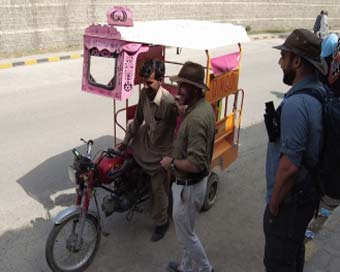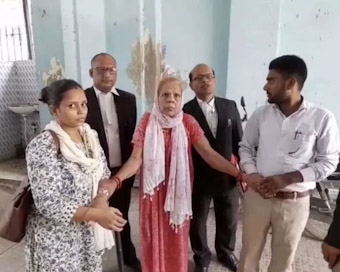Gallery
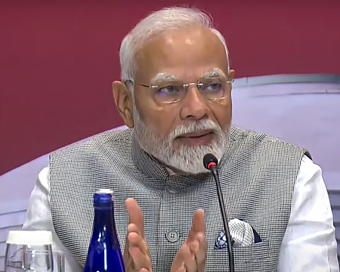 PM Modi visit USA
PM Modi visit USA Only the mirror in my washroom and phone gallery see the crazy me : Sara Khan
Only the mirror in my washroom and phone gallery see the crazy me : Sara Khan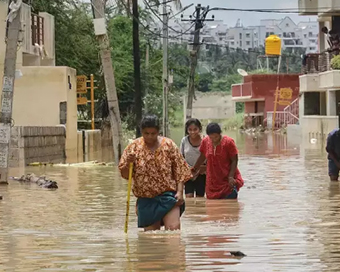 Karnataka rain fury: Photos of flooded streets, uprooted trees
Karnataka rain fury: Photos of flooded streets, uprooted trees Cannes 2022: Deepika Padukone stuns at the French Riviera in Sabyasachi outfit
Cannes 2022: Deepika Padukone stuns at the French Riviera in Sabyasachi outfit Ranbir Kapoor And Alia Bhatt's Wedding Pics - Sealed With A Kiss
Ranbir Kapoor And Alia Bhatt's Wedding Pics - Sealed With A Kiss Oscars 2022: Every Academy Award Winner
Oscars 2022: Every Academy Award Winner Shane Warne (1969-2022): Australian cricket legend's life in pictures
Shane Warne (1969-2022): Australian cricket legend's life in pictures Photos: What Russia's invasion of Ukraine looks like on the ground
Photos: What Russia's invasion of Ukraine looks like on the ground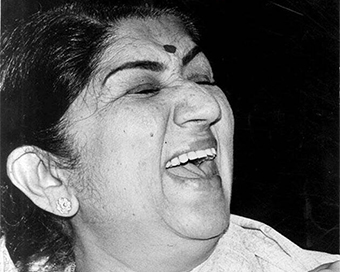 Lata Mangeshkar (1929-2022): A pictorial tribute to the 'Nightingale of India'
Lata Mangeshkar (1929-2022): A pictorial tribute to the 'Nightingale of India' PM Modi unveils 216-feet tall Statue of Equality in Hyderabad (PHOTOS)
PM Modi unveils 216-feet tall Statue of Equality in Hyderabad (PHOTOS)The Badminton Association of India (BAI) has announced a 14-member-strong India squad for
- Men’s Sr Hockey Nationals to be played in division-based format from April 4
- Mensik denies Djokovic 100th title in Miami final
- KIPG: Son of a vegetable vendor, Bihar’s Jhandu Kumar eyes Worlds, 2028 Paralympics
- Hardik Singh credits hard work and team unity for receiving HI Midfielder of the Year award
- Djokovic, Alcaraz land in same half of Miami draw
More than one third stopped going to hospital other than for corona infection Last Updated : 13 Apr 2020 05:17:50 AM IST 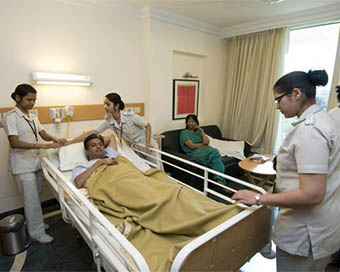
file photo Almost one third of people have stopped going to a hospital in the lockdown except for a coronavirus condition.
A recent survey found that about 36 per cent of respondents mentioned that in the past two weeks they and their household members had curtailed going to a health facility for a medical condition other than a coronavirus infection. The survey found that social distancing can have other physical or mental health effects.The National Council of Applied Economic Research, NCAER, released the results of its first round of the Delhi National Capital Region Coronavirus Telephone Survey (DCVTS).ON social distancing, it found that more than half the respondents (53.5 per cent) during the previous day had made no contacts at all outside their home. At the other end, a significant proportion of respondents (5.6 per cent) had 10 or more contacts outside the house, possibly including people like shopkeepers for essential goods or social workers who could not have practiced social distancing.The survey also found that about 9 per cent of households experienced difficulty in accessing medicines could lead to serious health implications going forward, especially if these shortages get worse over time.On access to essential items in the two weeks prior to the Survey, about 29.3 per cent of households were affected by shortages in supplies of food, cooking fuel, and medicine. There were significant differences between rural (32.6 per cent) and urban (25.3 per cent) households in their experience of supply shortages.The item-wise data shows that 20.7 per cent of respondents experienced shortages of vegetables and fruits (25.2 per cent in rural areas and 15.2 per cent in urban areas), followed by those experiencing shortages of grains and cereals (14 per cent), medicines (8.7 per cent), cooking fuel (7.8 per cent), and milk (6.5 per cent)The DCVTS also analysed the perceptions of people about the possibility of their getting infected by the coronavirus. The survey found that as of April 3-6, 65.3 per cent of respondents did not see any chance of themselves or their household members getting infected.These responses were similar in both rural and urban areas. This finding stands in sharp contrast to the finding 95 per cent of respondents thought the coronavirus was highly dangerous.There appeared to be a sense of some denial among nearly two-thirds of respondents that though highly dangerous, they themselves would not get infected. This denial gap could have serious implications for what happens when the lockdown is lifted if households become complacent believing that they themselves would be immune to the infection, the NCAER survey found.On the impact of the virus on the livelihoods of people, the vast majority of the DCVTS respondents reported a reduction in their income or wages in the two weeks before the Survey, i.e. since March 20th, with the reduction being the lowest for salaried workers and farmers, and the most for casual workers.Only 15.5 per cent of households reported that the coronavirus outbreak has not reduced their income or wages in the two weeks preceding the Survey.While an estimated 74.5 per cent of casual workers reported that their income and wages had suffered "very much", the corresponding figures were lower for regular salaried workers (46.7 per cent) and farmers (41.6 per cent).It is possible that the effect on farmers could be greater after the harvesting season is over (towards the end of April or May), given that the lockdown and social distancing may make it difficult for farmers to sell and deliver their produce.This survey suggests that people's ability to distinguish coronavirus from the common cold or flu will not be easy, implying the critical need for more testing of symptomatic cases and cluster testing.IANS New Delhi For Latest Updates Please-
Join us on
Follow us on








172.31.16.186


